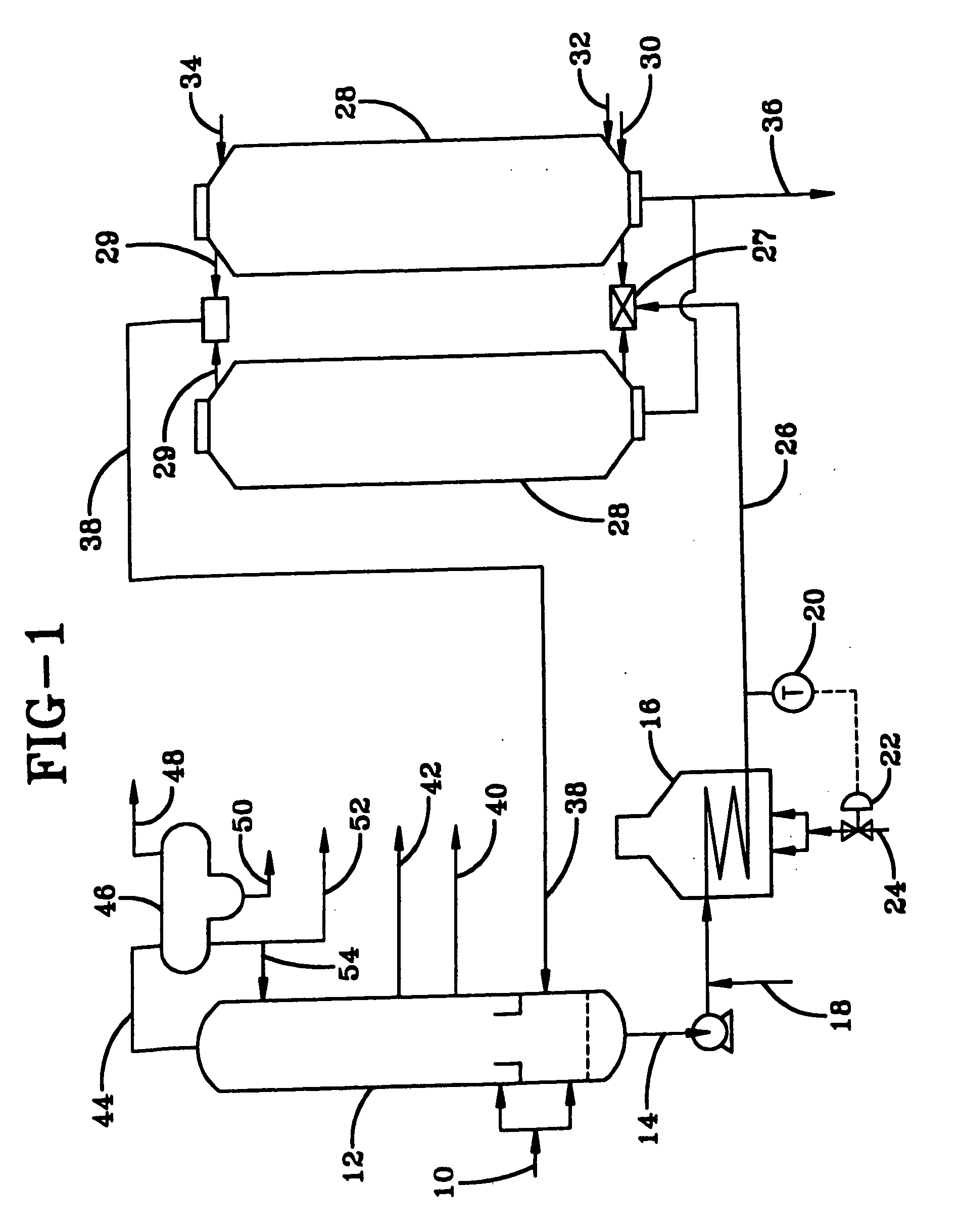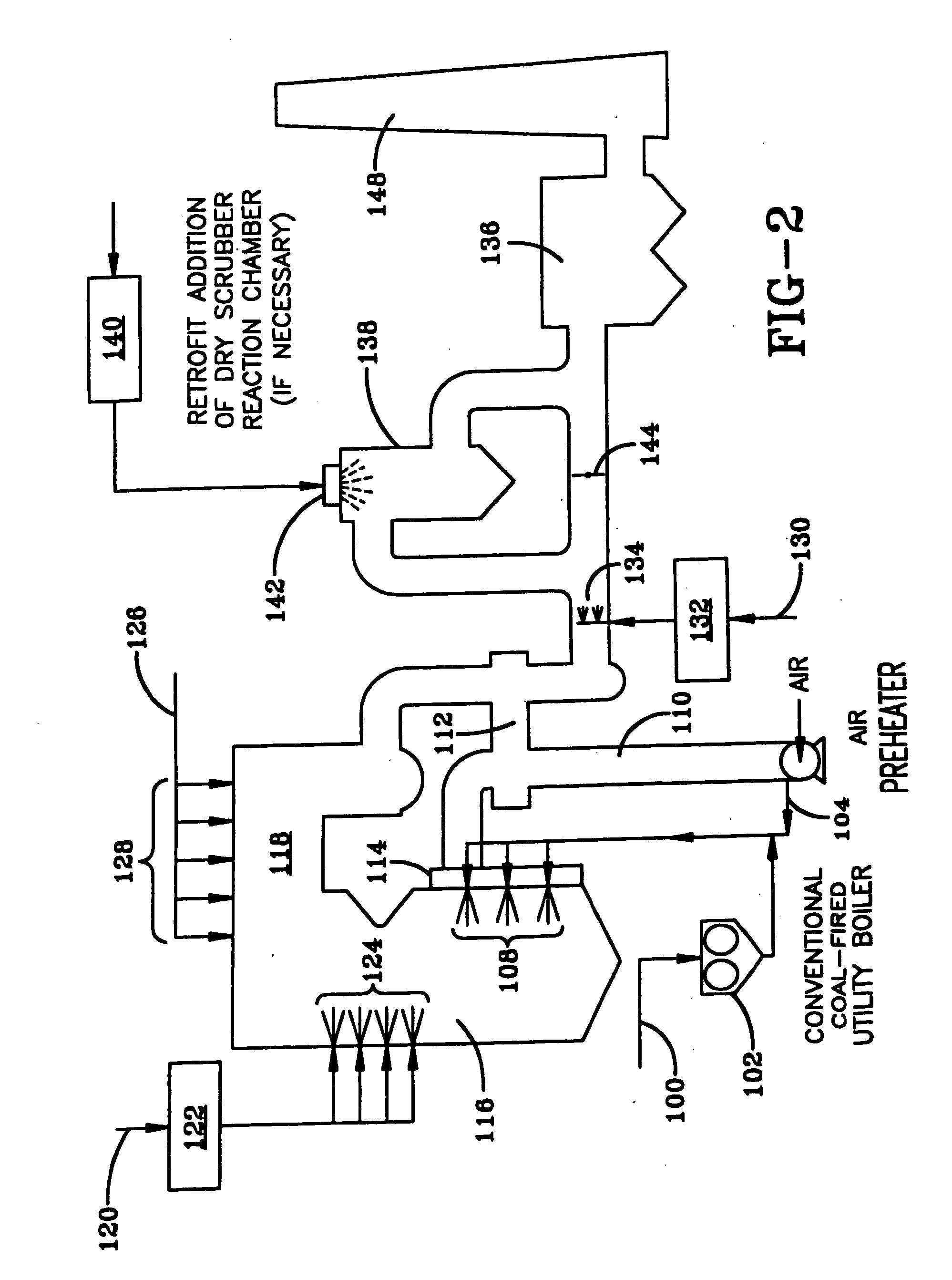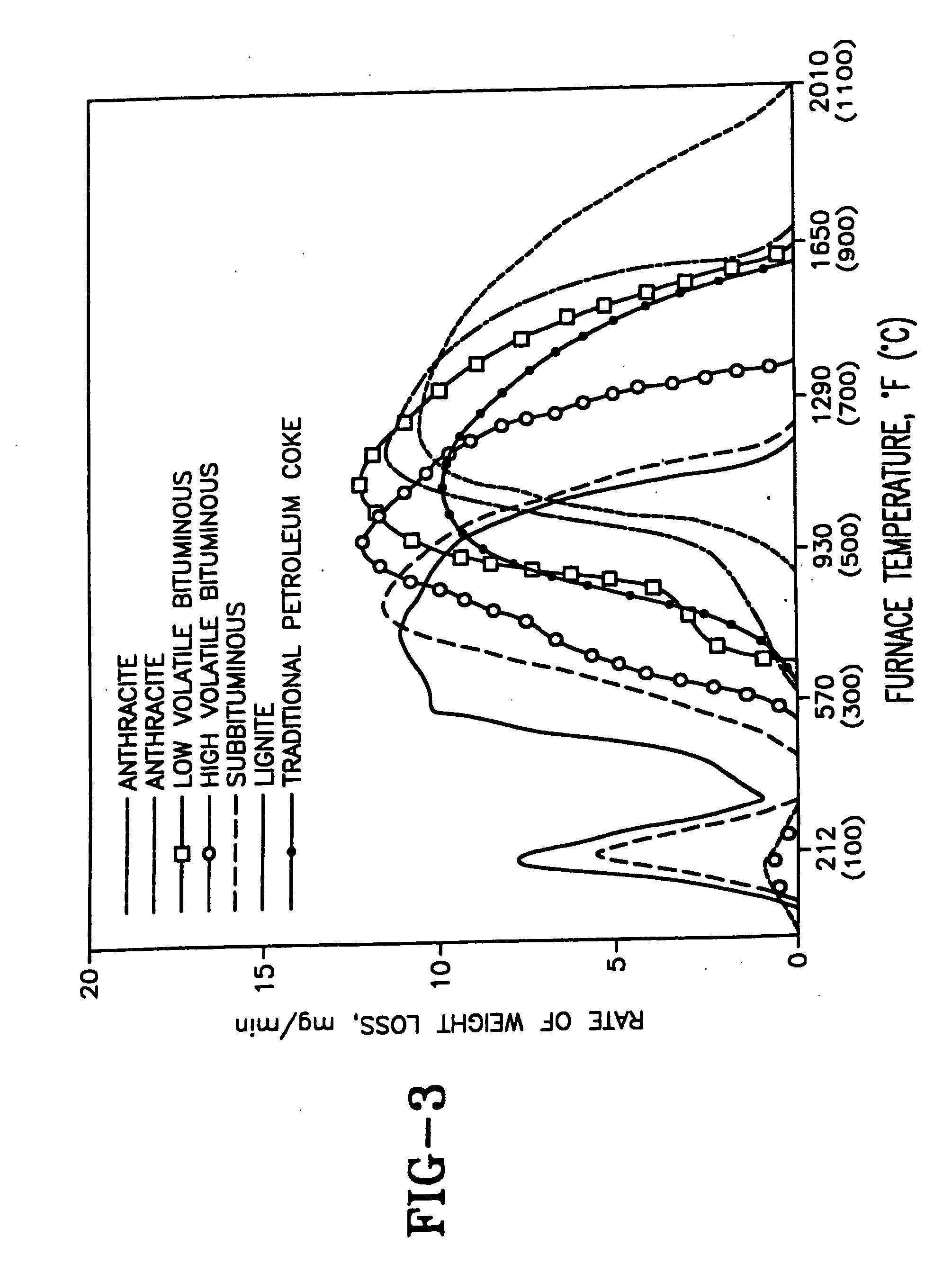Production and use of a premium fuel grade petroleum coke
a petroleum coke and premium technology, applied in the field of petroleum coking processes, can solve the problems of conventional wisdom in the production and use of this new formulation of petroleum coke, and achieve the effects of simple control, reduced corrosive ash deposits, and high sulfur levels
- Summary
- Abstract
- Description
- Claims
- Application Information
AI Technical Summary
Benefits of technology
Problems solved by technology
Method used
Image
Examples
example 1
G. EXAMPLE 1
Utility Boiler with Conventional Particulate Control Device (PCD)
[0250] A power utility has a conventional, pulverized-coal fired, utility boiler that currently burns medium-sulfur, bituminous coal from central Ohio. The existing utility currently has a typical particulate control device with no sulfur oxide emissions control. Full replacement of this coal with a high-sulfur petroleum coke produced by the present invention would have the following results:
CurrentUpgradedFuel CharacteristicsCoalcokeResultsBasis = 1.0 × 109 Btu / Hr Heat Release Rate as InputVCM (% wt)40.016.060%LowerAsh (% wt.)9.10.397%LowerMoisture (% wt.)3.60.392%LowerSulfur (% wt)4.04.38%HigherHeating Value (MBtu / lb)12.915.319%HigherFuel Rate (Mlb / Hr)77.865.416%LowerPollutant Emissions: Uncontrolled / ControlledAsh Particulates (lb / MMBtu or7.1 / 0.4 .2 / .0197%LowerMlb / Hr)Sulfur Oxides (lb / MMBtu or6.2 / 6.25.6 / .6 90%LowerMlb / Hr)Carbon Dioxide (lb / MMBtu or23821012%LowerMlb / Hr)
This example demonstrates major b...
example 2
F. EXAMPLE 2
Utility Boiler with PCD and Conventional Wet Scrubber
[0807] A power utility has a conventional, pulverized-coal fired utility boiler that currently uses a high sulfur, bituminous coal (Illinois #6). This utility has a conventional particulate control device (PCD) followed by a wet scrubber, achieving ˜90% removal efficiency for sulfur oxides. Full replacement of this coal with a high-sulfur, fluid (petroleum) coke produced by the present invention would have the following results:
CurrentUpgradedFuel CharacteristicsCoalcokeResultsBasis = 1.0 × 109 Btu / Hr Heat Release Rate as InputVCM (% wt)44.220.054%LowerAsh (% wt.)10.80.397%LowerMoisture (% wt.)17.63.878%LowerSulfur (% wt)4.35.221%HigherHeating Value (Mbtu / lb)10.314.238%HigherFuel Rate (Mlb / Hr)97.070.427%LowerPollutant Emissions: Uncontrolled / ControlledAsh Particulates (lb / MMBtu or10.5 / .53 .18 / .0198%LowerMlb / Hr)Sulfur Oxides (lb / MMBtu or8.4 / .847.4 / .1582%LowerMlb / Hr)Carbon Dioxide (lb / MMBtu or24521413%LowerMlb / Hr)
[080...
example 3
F. EXAMPLE 3
Low-Sulfur Lignite Coal vs. Medium Sulfur Coke with Dry Sorbent Injection
[0840] Another power utility has a conventional, pulverized-coal fired utility boiler that currently burns a low-sulfur, lignite coal from Texas. The existing utility has a large-capacity, particulate control device with no sulfur oxides control. Full replacement of this coal with a medium-sulfur, petroleum coke produced by the present invention would have the following results:
CurrentUpgradedFuel CharacteristicsCoalcokeResultsBasis = 1.0 × 109 Btu / Hr Heat Release Rate as InputVCM (% wt)31.516.049%LowerAsh (% wt.)50.40.399+%LowerMoisture (% wt.)34.10.399+%LowerSulfur (% wt)1.02.5150%HigherHeating Value (Mbtu / lb)3.915.3290%HigherFuel Rate (Mlb / Hr)25465.474%LowerPollutant Emissions: Uncontrolled / ControlledAsh Particulates (lb / MMBtu or128 / 6.4 0.2 / .0199+%LowerMlb / Hr)Sulfur Oxides (lb / MMBtu or5.13.2 / .9637 / 81%LowerMlb / Hr)Carbon Dioxide (lb / MMBtu or315210 / 15033 / 52%LowerMlb / Hr)
This example further demon...
PUM
| Property | Measurement | Unit |
|---|---|---|
| surface area | aaaaa | aaaaa |
| boiling points | aaaaa | aaaaa |
| temperature | aaaaa | aaaaa |
Abstract
Description
Claims
Application Information
 Login to View More
Login to View More - R&D
- Intellectual Property
- Life Sciences
- Materials
- Tech Scout
- Unparalleled Data Quality
- Higher Quality Content
- 60% Fewer Hallucinations
Browse by: Latest US Patents, China's latest patents, Technical Efficacy Thesaurus, Application Domain, Technology Topic, Popular Technical Reports.
© 2025 PatSnap. All rights reserved.Legal|Privacy policy|Modern Slavery Act Transparency Statement|Sitemap|About US| Contact US: help@patsnap.com



